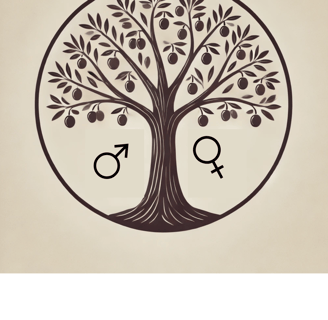Masculine or Feminine? How Italian Noun Gender Works
Learn why Italian nouns are gendered, how to recognise masculine and feminine forms, and how to master gender rules naturally. Includes tips for learners in The Hague!
Nicola Sorrenti
2 min read


Why Does Italian Gender Matter?
If you're a native English speaker, words like house feel neutral. Not so in Italian: la casa is unmistakably feminine. But... why? In this article, we’ll untangle the grammar, history, and logic behind Italian noun gender — and help you spot the patterns (with less stress and more humour).
Whether you're learning Italian for fun or taking Italian lessons in The Hague, this is essential stuff!
The Origins: A Latin Love Story (with a Plot Twist)
Italian is a Romance language, which means it evolved from Vulgar Latin — the spoken Latin of regular folks (not the kind you'd find carved in marble). In classical Latin, nouns could be masculine, feminine, or neutral.
What happened to the neutral gender?
It got acquired by the masculine one over time — a historical simplification that lives on in Italian, Spanish, French, and beyond.a
Trees, Fruits, and Gender Myths
In ancient language systems, gender was often symbolic. Consider this example:
Trees like il melo (apple tree) or il pero (pear tree) were considered masculine — seen as "fathers" producing fruit.
Fruits like la mela or la pera were feminine — the "mothers" carrying seeds.
This symbolic division didn’t survive fully intact, but you can still spot traces of it in modern Italian.
Fun fact: L’amore (love) is masculine in Italian — a nod to Eros, the Greek god of love.
Modern Gender Rules (The Ones You Can Actually Use)
Today, gender assignment follows mostly grammatical — not symbolic — rules. Here are some reliable patterns:
Common Patterns:
-o endings → usually masculine
e.g. il libro (the book)-a endings → usually feminine
e.g. la casa (the house)-e endings → could be either
e.g. il cane (the dog), la notte (the night)
Pro Tip:
Always learn a new noun with its article (il, la, lo, l’). It’s your best friend for remembering gender.
What About Foreign Words?
Italian happily borrows from other languages — and most foreign terms default to the masculine:
il computer
lo smartphone
il Wi-Fi
Brand names also adopt the gender of the thing they represent:
la Guinness (la birra Guinness)
la Volvo (la macchina Volvo)
la Apple (la compagnia Apple)
Don’t Panic: Learn Gender Like a Native
Yes, gender rules can feel overwhelming at first. But here's the truth:
Even Italians don’t “memorise” genders — they absorb them over time by exposure.
With regular practice, especially in a classroom or private lesson setting (like Italian lessons in The Hague), you’ll start spotting patterns naturally.
Recap: Quick Tips for Mastering Italian Gender
Learn nouns with their articles (il, la, lo, etc.)
Focus on common endings: -o (masc.), -a (fem.), -e (either)
Pay attention to foreign words — usually masculine
Don’t sweat every exception — practice makes perfetto
Are You Learning Italian in The Hague?
If you're based in Den Haag and want to get comfortable with gender, grammar, and speaking confidently, you’re in the right place. We offer tailored Italian lessons in The Hague — in-person or online — to help you learn naturally, with humour and structure.
